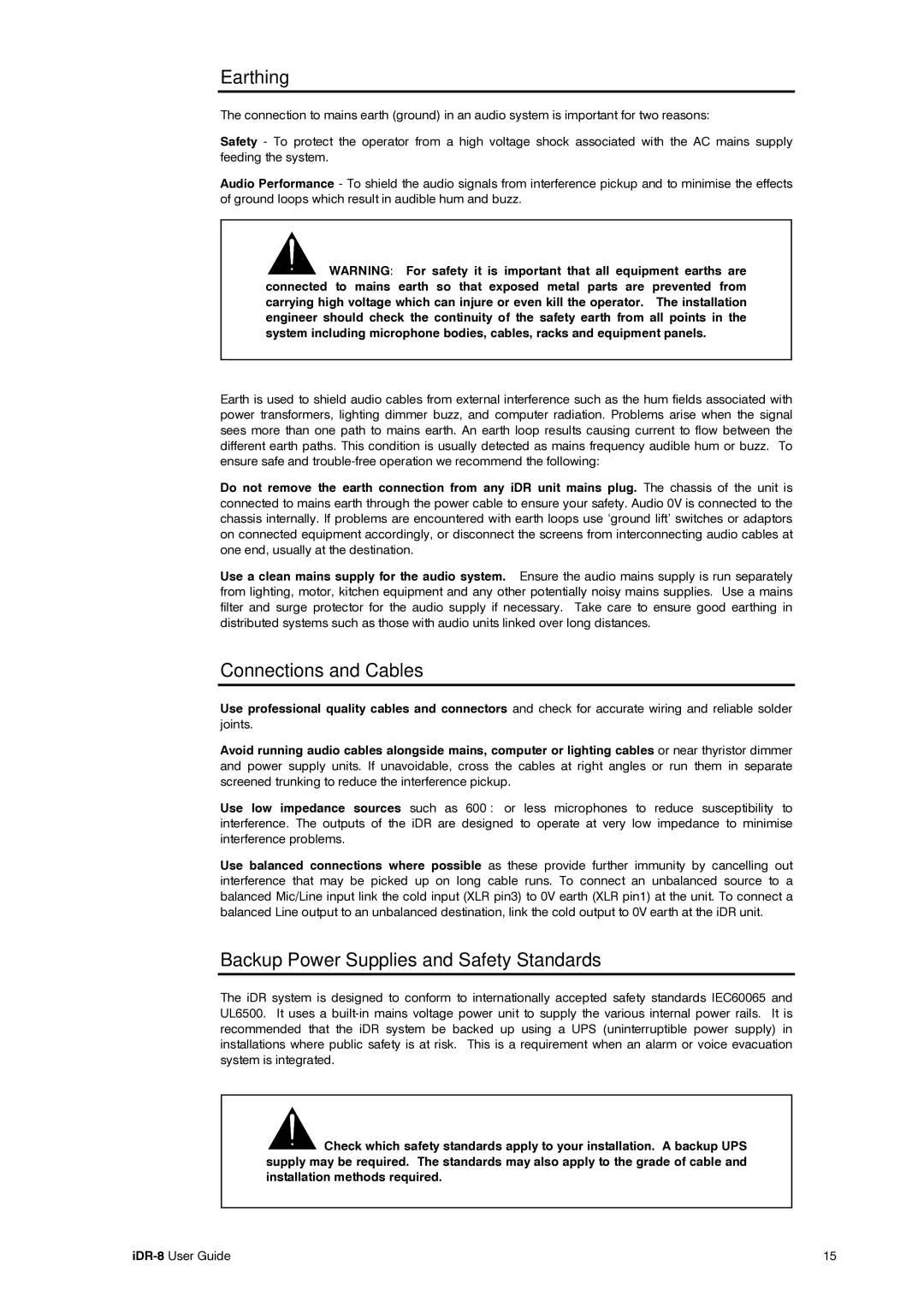
Earthing
The connection to mains earth (ground) in an audio system is important for two reasons:
Safety - To protect the operator from a high voltage shock associated with the AC mains supply feeding the system.
Audio Performance - To shield the audio signals from interference pickup and to minimise the effects of ground loops which result in audible hum and buzz.
![]() WARNING: For safety it is important that all equipment earths are connected to mains earth so that exposed metal parts are prevented from carrying high voltage which can injure or even kill the operator. The installation engineer should check the continuity of the safety earth from all points in the system including microphone bodies, cables, racks and equipment panels.
WARNING: For safety it is important that all equipment earths are connected to mains earth so that exposed metal parts are prevented from carrying high voltage which can injure or even kill the operator. The installation engineer should check the continuity of the safety earth from all points in the system including microphone bodies, cables, racks and equipment panels.
Earth is used to shield audio cables from external interference such as the hum fields associated with power transformers, lighting dimmer buzz, and computer radiation. Problems arise when the signal sees more than one path to mains earth. An earth loop results causing current to flow between the different earth paths. This condition is usually detected as mains frequency audible hum or buzz. To ensure safe and
Do not remove the earth connection from any iDR unit mains plug. The chassis of the unit is connected to mains earth through the power cable to ensure your safety. Audio 0V is connected to the chassis internally. If problems are encountered with earth loops use ‘ground lift’ switches or adaptors on connected equipment accordingly, or disconnect the screens from interconnecting audio cables at one end, usually at the destination.
Use a clean mains supply for the audio system. Ensure the audio mains supply is run separately from lighting, motor, kitchen equipment and any other potentially noisy mains supplies. Use a mains filter and surge protector for the audio supply if necessary. Take care to ensure good earthing in distributed systems such as those with audio units linked over long distances.
Connections and Cables
Use professional quality cables and connectors and check for accurate wiring and reliable solder joints.
Avoid running audio cables alongside mains, computer or lighting cables or near thyristor dimmer and power supply units. If unavoidable, cross the cables at right angles or run them in separate screened trunking to reduce the interference pickup.
Use low impedance sources such as 600Ω or less microphones to reduce susceptibility to interference. The outputs of the iDR are designed to operate at very low impedance to minimise interference problems.
Use balanced connections where possible as these provide further immunity by cancelling out interference that may be picked up on long cable runs. To connect an unbalanced source to a balanced Mic/Line input link the cold input (XLR pin3) to 0V earth (XLR pin1) at the unit. To connect a balanced Line output to an unbalanced destination, link the cold output to 0V earth at the iDR unit.
Backup Power Supplies and Safety Standards
The iDR system is designed to conform to internationally accepted safety standards IEC60065 and UL6500. It uses a
![]() Check which safety standards apply to your installation. A backup UPS supply may be required. The standards may also apply to the grade of cable and installation methods required.
Check which safety standards apply to your installation. A backup UPS supply may be required. The standards may also apply to the grade of cable and installation methods required.
| 15 |
